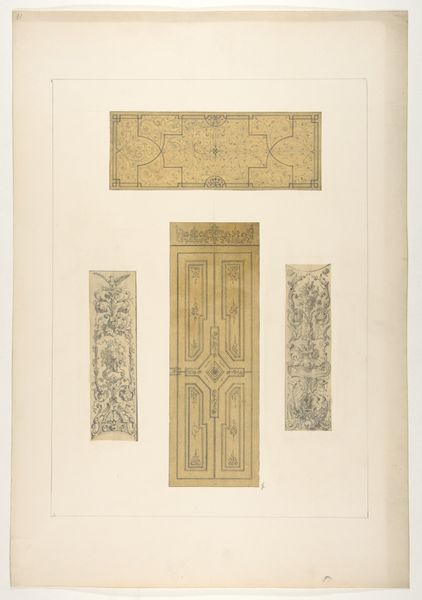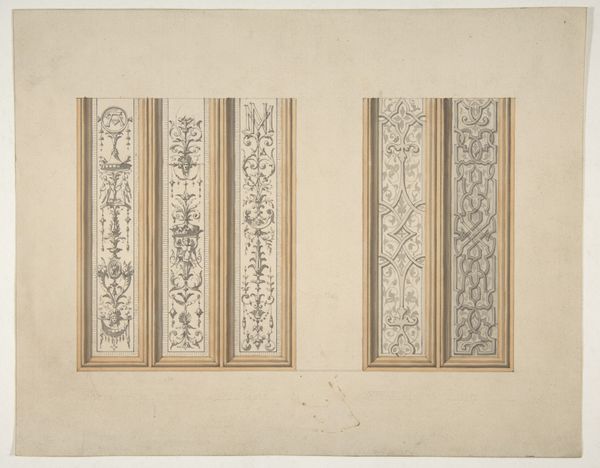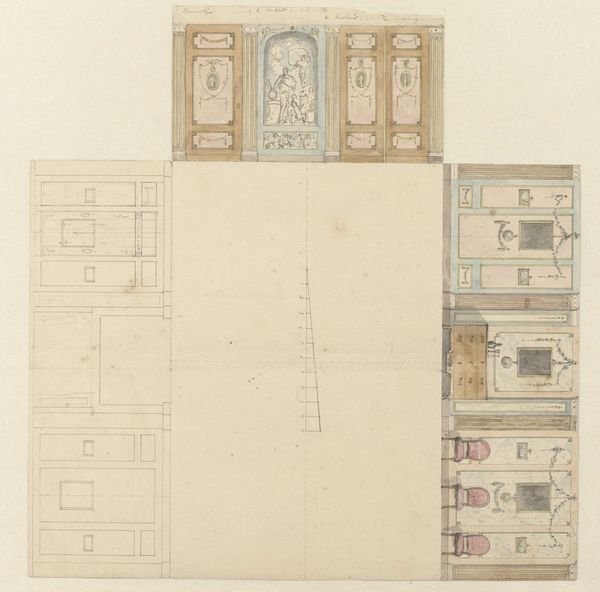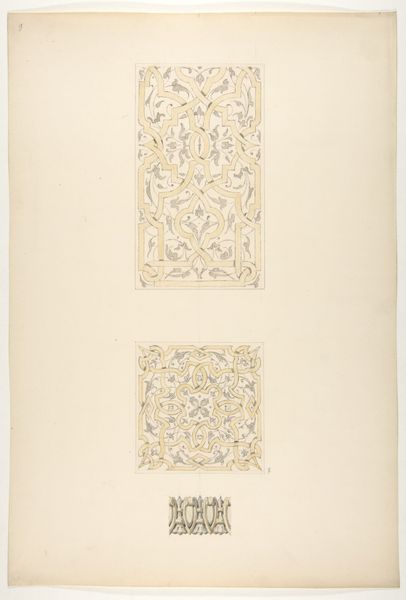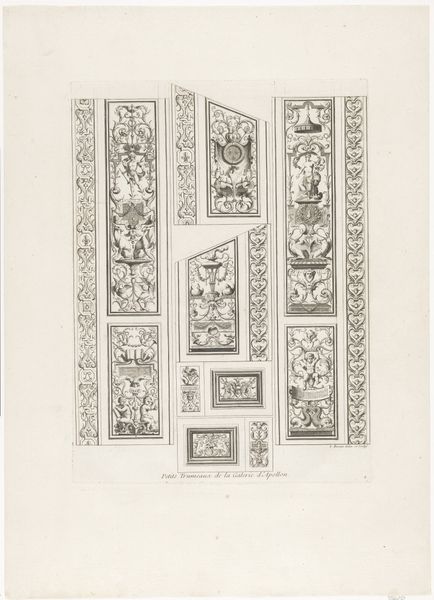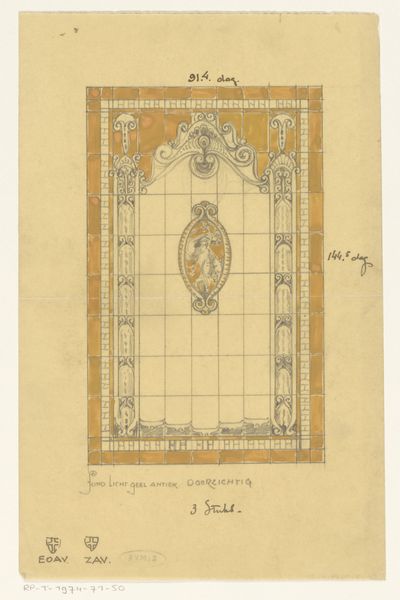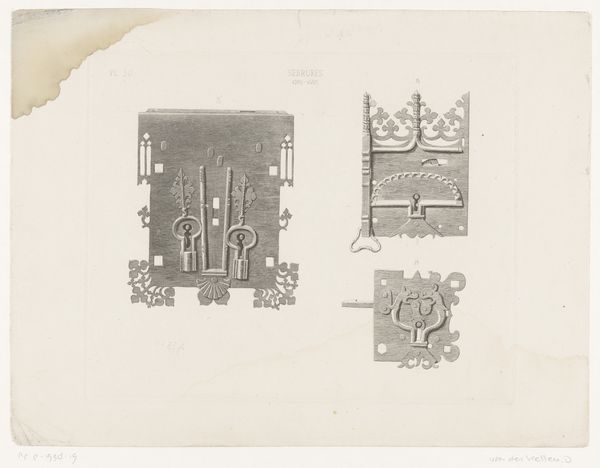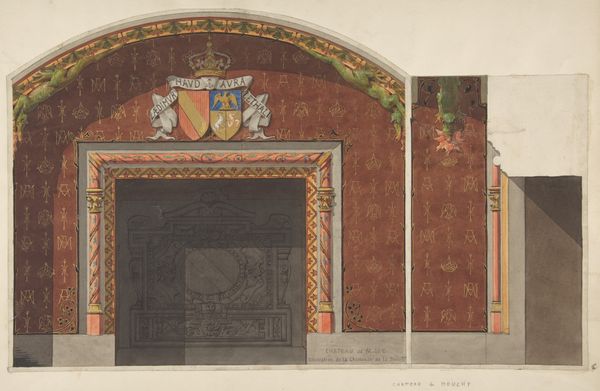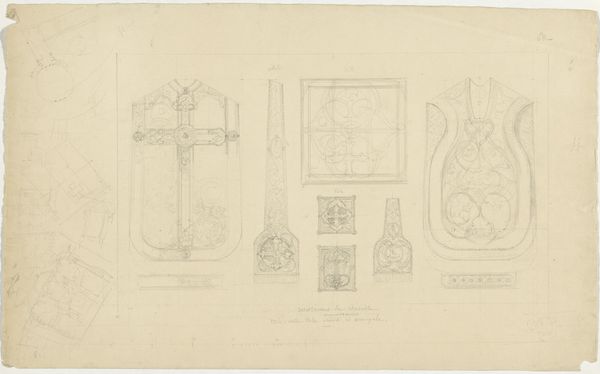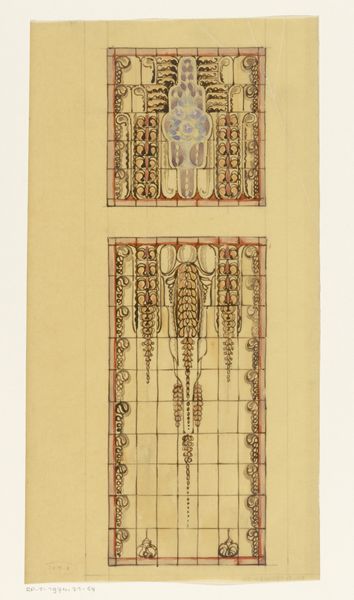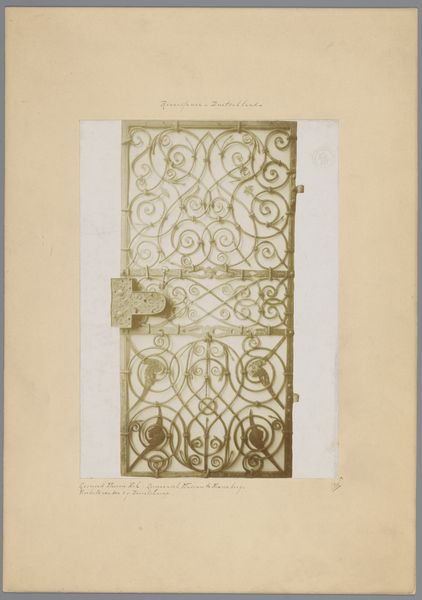
drawing, ornament, paper, ink, architecture
#
drawing
#
ornament
#
paper
#
ink
#
architecture
Dimensions: height 369 mm, width 551 mm
Copyright: Rijks Museum: Open Domain
Curator: Here we have "Designs for Four Stained-Glass Windows with Ships and Ornaments," created sometime after 1907. They are designs on paper using ink, likely intended as architectural elements. Editor: They've got this rather charming, archaic feel about them, don't they? Almost like blueprints from a seafaring fairy tale, very ornamental and meticulous, which gives them a captivating gravity. Curator: Absolutely, that’s likely part of the cultural appeal intended for stained glass during that period. It conjures historical romanticism tied to maritime power and prosperity, particularly in port cities like Rotterdam, possibly where these designs were conceived. Notice how two feature ships very prominently? It connects to broader narratives of trade, exploration, and national identity. Editor: Yes, and it’s also fascinating how the materials would transform the designs. Imagine sunlight filtering through colored glass, how different the finished panels would feel from these linear drawings. I am curious about the craftsperson’s agency here. To what degree would they be able to adjust materials, change dimensions and perhaps tweak the patterns when making the physical object. I think there would be some degree of negotiation between these architectural images, available glass materials, the labour conditions and craft experience to translate these images from paper into a built architectural installation. Curator: I agree; the material execution would profoundly alter their reception. Beyond individual artistry, consider also how stained glass was experiencing a revival around this time, moving beyond strictly religious or state buildings into more civic and even domestic spaces. So who were these for? Public buildings meant to showcase regional strength, private commissions in the houses of wealthy ship owners…or something else? Editor: And were the ornamentations symbols meant to refer back to local or familial meanings? Were these to serve a particular architectural setting or purpose? The details of that craft would shift how those symbols read materially too. It could change everything... from surface luster, light, leading line placements. Curator: Precisely. It's a dialogue between intention, execution, and placement, all operating within specific historical and material contexts. Editor: So many layers transforming the making, I would never get bored looking at this type of artwork. Curator: I feel like it reveals that no artistic image is an island. Each artwork reflects cultural currents, whether a romantic longing for the past, celebration of mercantile prowess, or experimentation with different methods for art making.
Comments
No comments
Be the first to comment and join the conversation on the ultimate creative platform.
